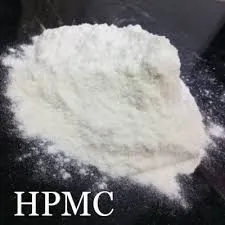
Nov . 17, 2024 08:55 Back to list
methylhydroxyethyl cellulose
Understanding Methyl Hydroxyethyl Cellulose Applications and Benefits
Methyl Hydroxyethyl Cellulose (MHEC) is a non-ionic cellulose ether widely utilized in various industries due to its versatile properties. Derived from cellulose, the most abundant organic polymer on Earth, MHEC combines the benefits of both hydroxyethylation and methylation processes to enhance its functional characteristics. This article explores the composition, properties, applications, and benefits of Methyl Hydroxyethyl Cellulose across different sectors.
Composition and Chemical Structure
Methyl Hydroxyethyl Cellulose is produced through the etherification of cellulose by introducing methyl and hydroxyethyl groups. The result is a highly soluble polymer that can form viscous solutions. The chemical structure of MHEC features a hydrophilic backbone, which is responsible for its ability to absorb water and form gels. This unique composition contributes to its properties as a thickener, binder, and emulsifier.
Properties of MHEC
MHEC exhibits a range of properties that make it suitable for diverse applications
1. Water Solubility MHEC can easily dissolve in water and create stable solutions, making it suitable for use in aqueous systems.
2. Thickening and Viscosity MHEC increases the viscosity of solutions, which is particularly important in formulations where consistency and texture are crucial.
3. Film-Forming Ability It can form flexible films, which is advantageous in coatings and adhesives.
4. Stabilization MHEC helps stabilize emulsions, preventing the separation of oil and water components.
5. Biocompatibility Being derived from natural cellulose, MHEC is considered biocompatible, making it safe for use in food, pharmaceuticals, and cosmetics.
Applications of MHEC
Methyl Hydroxyethyl Cellulose finds utility across numerous industries
methylhydroxyethyl cellulose

1. Construction In the construction realm, MHEC is commonly used in cement-based products like tile adhesives, mortar, and grouts. Its thickening properties enhance workability and adhesion, while also extending the pot life of the mixtures, allowing for more extended application times.
2. Food Industry MHEC acts as a thickening agent, stabilizer, and emulsifier in various food products. It is often found in sauces, dressings, and dairy products to improve texture and prevent ingredient separation.
3. Pharmaceuticals In the pharmaceutical sector, MHEC is utilized in drug formulations as a binding agent in tablets and as a controlled-release agent. Its ability to form gels makes it valuable in the production of hydrogels for drug delivery systems.
4. Cosmetics and Personal Care MHEC is prevalent in cosmetic formulations, contributing to the texture and stability of lotions, creams, and gels. It enhances moisturizing properties and provides a pleasing sensory feel upon application.
5. Agriculture In agriculture, MHEC is used as a soil conditioner and in seed coatings to improve water retention and promote seedling growth.
Benefits of MHEC
The use of Methyl Hydroxyethyl Cellulose offers several advantages
1. Versatility Its wide range of applications makes MHEC a multifunctional ingredient, providing value across industries.
2. Enhancing Quality By improving the texture, viscosity, and stability of products, MHEC elevates the overall quality of formulations.
3. Safety and Non-toxicity Given its natural origins, MHEC is generally recognized as safe (GRAS) for food and cosmetic applications, appealing to health-conscious consumers.
4. Cost-effectiveness MHEC provides effective functionality that can replace more expensive ingredients, contributing to cost savings in formulation processes.
5. Environmental Considerations As a cellulose derivative, MHEC can be produced sustainably, aligning with the growing trend toward eco-friendly ingredients.
In conclusion, Methyl Hydroxyethyl Cellulose is a remarkable compound that showcases the potential of cellulose derivatives. Its multifunctional attributes and adaptability make it a valuable component in various industries, from construction to food and cosmetics. As research continues to explore its capabilities, the importance of MHEC in enhancing product efficacy and quality is likely to grow even further.
-
Versatile Hpmc Uses in Different Industries
NewsJun.19,2025
-
Redispersible Powder's Role in Enhancing Durability of Construction Products
NewsJun.19,2025
-
Hydroxyethyl Cellulose Applications Driving Green Industrial Processes
NewsJun.19,2025
-
Exploring Different Redispersible Polymer Powder
NewsJun.19,2025
-
Choosing the Right Mortar Bonding Agent
NewsJun.19,2025
-
Applications and Significance of China Hpmc in Modern Industries
NewsJun.19,2025







